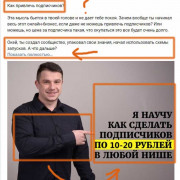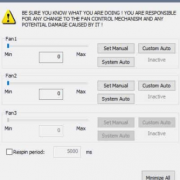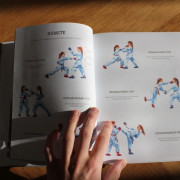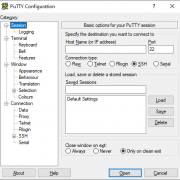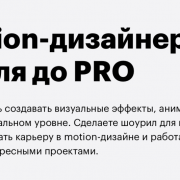Introduction
Содержание:
- Горизонтальная форма
- Responsive tables
- How do the variants and accented tables work?
- Form Control Sizing
- Bootstrap 4 CDN
- Доступность
- Валидация формы
- Community
- Без борьбы не бывает победы
- Скрытые метки
- Строка формы
- Сообщество
- Checkboxes and Radios
- Custom Select Menu Size
- Accented tables
- Форма в одну строку
- Auto-layout columns
- Vertical alignment
- Form Styles
Горизонтальная форма
Вы можете использовать классы сетки Bootstrap для создания горизонтальных форм. Просто укажите, сколько колонок должен занимать каждый элемент. В частности, добавьте класс .row к .form-group и класс .col-*-* или .col-* для каждой колонки.
Вы также должны добавить класс .col-form-label к элементу <label>, чтобы метка относительно текстовых полей расположилась по центру вертикали.
<link rel=»stylesheet» href=»https://maxcdn.bootstrapcdn.com/bootstrap/4.0.0/css/bootstrap.min.css»>
<div class=»container»>
<form>
<div class=»form-group row»>
<label for=»first_name» class=»col-xs-3 col-form-label mr-2″>Имя</label>
<div class=»col-xs-9″>
<input type=»text» class=»form-control» id=»first_name» name=»first_name»>
</div>
</div>
<div class=»form-group row»>
<label for=»last_name» class=»col-xs-3 col-form-label mr-2″>Фамилия</label>
<div class=»col-xs-9″>
<input type=»text» class=»form-control» id=»last_name» name=»last_name»>
</div>
</div>
<div class=»form-group row»>
<div class=»offset-xs-3 col-xs-9″>
<button type=»submit» class=»btn btn-primary»>Отправить</button>
</div>
</div>
</form>
</div>
Bootstrap 4 против Bootstrap 3
Когда речь идёт о горизонтальных формах, имеются некоторые незначительные различия между Bootstrap 4 и Bootstrap 3.
Сетки
При использовании сеток для макета формы, Bootstrap 4 требует класс .row. Этот класс не является обязательным для форм Bootstrap 3 (хотя по прежнему обязателен для сеток Bootstrap 3).
Метки
Bootstrap 4 использует .col-form-label в сетке макета формы, тогда как Bootstrap 3 использует .control-label
Обратите внимание, что Bootstrap 4 изначально использовал .form-control-label, но впоследствии заменил его на .col-form-label.
Класс .form-horizontal
Bootstrap 3 требует класс .form-horizontal, тогда как Bootstrap 4 нет.
Responsive tables
Responsive tables allow tables to be scrolled horizontally with ease. Make any table responsive across all viewports by wrapping a with . Or, pick a maximum breakpoint with which to have a responsive table up to by using .
Vertical clipping/truncation
Responsive tables make use of , which clips off any content that goes beyond the bottom or top edges of the table. In particular, this can clip off dropdown menus and other third-party widgets.
Always responsive
Across every breakpoint, use for horizontally scrolling tables.
| # | Heading | Heading | Heading | Heading | Heading | Heading | Heading | Heading | Heading |
|---|---|---|---|---|---|---|---|---|---|
| 1 | Cell | Cell | Cell | Cell | Cell | Cell | Cell | Cell | Cell |
| 2 | Cell | Cell | Cell | Cell | Cell | Cell | Cell | Cell | Cell |
| 3 | Cell | Cell | Cell | Cell | Cell | Cell | Cell | Cell | Cell |
Breakpoint specific
Use as needed to create responsive tables up to a particular breakpoint. From that breakpoint and up, the table will behave normally and not scroll horizontally.
These tables may appear broken until their responsive styles apply at specific viewport widths.
| # | Heading | Heading | Heading | Heading | Heading | Heading | Heading | Heading |
|---|---|---|---|---|---|---|---|---|
| 1 | Cell | Cell | Cell | Cell | Cell | Cell | Cell | Cell |
| 2 | Cell | Cell | Cell | Cell | Cell | Cell | Cell | Cell |
| 3 | Cell | Cell | Cell | Cell | Cell | Cell | Cell | Cell |
| # | Heading | Heading | Heading | Heading | Heading | Heading | Heading | Heading |
|---|---|---|---|---|---|---|---|---|
| 1 | Cell | Cell | Cell | Cell | Cell | Cell | Cell | Cell |
| 2 | Cell | Cell | Cell | Cell | Cell | Cell | Cell | Cell |
| 3 | Cell | Cell | Cell | Cell | Cell | Cell | Cell | Cell |
| # | Heading | Heading | Heading | Heading | Heading | Heading | Heading | Heading |
|---|---|---|---|---|---|---|---|---|
| 1 | Cell | Cell | Cell | Cell | Cell | Cell | Cell | Cell |
| 2 | Cell | Cell | Cell | Cell | Cell | Cell | Cell | Cell |
| 3 | Cell | Cell | Cell | Cell | Cell | Cell | Cell | Cell |
| # | Heading | Heading | Heading | Heading | Heading | Heading | Heading | Heading |
|---|---|---|---|---|---|---|---|---|
| 1 | Cell | Cell | Cell | Cell | Cell | Cell | Cell | Cell |
| 2 | Cell | Cell | Cell | Cell | Cell | Cell | Cell | Cell |
| 3 | Cell | Cell | Cell | Cell | Cell | Cell | Cell | Cell |
| # | Heading | Heading | Heading | Heading | Heading | Heading | Heading | Heading |
|---|---|---|---|---|---|---|---|---|
| 1 | Cell | Cell | Cell | Cell | Cell | Cell | Cell | Cell |
| 2 | Cell | Cell | Cell | Cell | Cell | Cell | Cell | Cell |
| 3 | Cell | Cell | Cell | Cell | Cell | Cell | Cell | Cell |
| # | Heading | Heading | Heading | Heading | Heading | Heading | Heading | Heading |
|---|---|---|---|---|---|---|---|---|
| 1 | Cell | Cell | Cell | Cell | Cell | Cell | Cell | Cell |
| 2 | Cell | Cell | Cell | Cell | Cell | Cell | Cell | Cell |
| 3 | Cell | Cell | Cell | Cell | Cell | Cell | Cell | Cell |
How do the variants and accented tables work?
For the accented tables (, , and ), we used some techniques to make these effects work for all our :
- We start by setting the background of a table cell with the custom property. All table variants then set that custom property to colorize the table cells. This way, we don’t get into trouble if semi-transparent colors are used as table backgrounds.
- Then we add an inset box shadow on the table cells with to layer on top of any specified . Because we use a huge spread and no blur, the color will be monotone. Since is unset by default, we don’t have a default box shadow.
- When either , or classes are added, the is set to a semitransparent color to colorize the background.
- For each table variant, we generate a color with the highest contrast depending on that color. For example, the accent color for is darker while has a lighter accent color.
- Text and border colors are generated the same way, and their colors are inherited by default.
Behind the scenes it looks like this:
Form Control Sizing
You can set heights and widths of forms using classes like .input-lg and .col-lg-* respectively. The following example demonstrates this −
<form role = "form">
<div class = "form-group">
<input class = "form-control input-lg" type = "text" placeholder =".input-lg">
</div>
<div class = "form-group">
<input class = "form-control" type = "text" placeholder = "Default input">
</div>
<div class = "form-group">
<input class = "form-control input-sm" type = "text" placeholder = ".input-sm">
</div>
<div class = "form-group"></div>
<div class = "form-group">
<select class = "form-control input-lg">
<option value = "">.input-lg</option>
</select>
</div>
<div class = "form-group">
<select class = "form-control">
<option value = "">Default select</option>
</select>
</div>
<div class = "form-group">
<select class = "form-control input-sm">
<option value = "">.input-sm</option>
</select>
</div>
<div class = "row">
<div class = "col-lg-2">
<input type = "text" class = "form-control" placeholder = ".col-lg-2">
</div>
<div class = "col-lg-3">
<input type = "text" class = "form-control" placeholder = ".col-lg-3">
</div>
<div class = "col-lg-4">
<input type = "text" class = "form-control" placeholder = ".col-lg-4">
</div>
</div>
</form>
Bootstrap 4 CDN
Если вы не хотите загружать и размещать Bootstrap 4 самостоятельно, вы можете включить его из CDN (Content Delivery Network).
MaxCDN обеспечивает поддержку CDN для CSS и JavaScript Bootstrap. Вы также должны включить JQuery:
MaxCDN:
<!— Последние скомпилированные и минимизированные CSS —><link rel=»stylesheet» href=»https://maxcdn.bootstrapcdn.com/bootstrap/4.5.0/css/bootstrap.min.css»><!— jQuery библиотека —><script src=»https://ajax.googleapis.com/ajax/libs/jquery/3.5.1/jquery.min.js»></script>
<!— Popper JS —><script src=»https://cdnjs.cloudflare.com/ajax/libs/popper.js/2.4.2/umd/popper.min.js»></script><!— Последний скомпилированный JavaScript —><script src=»https://maxcdn.bootstrapcdn.com/bootstrap/4.5.0/js/bootstrap.min.js»></script>
Примечание. Версии приведенных выше библиотек могут отличаться. Чтобы узнать самую последнюю (новую) версию нужной библиотеки или фреймфорка, перейдите на официальные сайты данных ресурсов:
Одно из преимуществ использования Bootstrap 4 CDN:
Многие пользователи уже загрузили Bootstrap 4 с MaxCDN при посещении другого сайта. В результате он будет загружен из кэша при посещении вашего сайта, что приводит к ускорению загрузки. Кроме того, большинство CDN гарантируют, что, как только пользователь запросит у него файл, он будет обслуживаться с ближайшего к ним сервера, что также приводит к ускорению загрузки.jQuery and Popper? Bootstrap 4 использует jQuery и Popper.js для компонентов JavaScript (таких как модалы, всплывающие подсказки, всплывающие окна и т.д.). Однако, если вы просто используете CSS-часть Bootstrap, они вам не нужны.
Показать компоненты, которые требуют jQuery »
- Закрываемые оповещения
- Кнопки и флажки/переключатели для переключения состояний
- Карусель для слайдов, элементов управления и индикаторов
- Сворочивание для переключения контента
- Dropdowns (также требуется Popper.js для идеального позиционирования)
- Модалы (открывать и закрывать)
- Navbar (для сворачивающихся меню)
- Всплывающие подсказки и всплывающие окна (также требуется Popper.js для идеального позиционирования)
- Scrollspy для поведения прокрутки и обновлений навигации
Доступность
Убедитесь, что у всех элементов управления формы есть подходящие доступные имена, чтобы их назначение можно было донести до пользователей вспомогательных технологий. Самый простой способ добиться этого — использовать элемент или в случае кнопок — включить достаточно описательный текст как часть содержимого .
В ситуациях, когда невозможно включить видимую метку или соответствующее текстовое содержимое, есть альтернативные способы предоставления доступного имени, например:
- Элементы скрыты с помощью класса
- Указание на существующий элемент, который может действовать как метка, используя
- Предоставление атрибута
- Явная установка доступного имени для элемента с помощью
Если ни один из них не присутствует, вспомогательные технологии могут прибегнуть к использованию атрибута в качестве запасного варианта для доступного имени в элементах и . Примеры в этом разделе представляют несколько предлагаемых подходов для конкретных случаев.
Несмотря на то, что использование визуально скрытого содержимого (содержимое , и даже , которое исчезает после того, как в поле формы появляется содержимое) принесет пользу пользователям вспомогательных технологий, отсутствие видимого текста метки все же может быть проблематично для некоторых пользователей. Как правило, лучше всего подходят видимые метки в той или иной форме как с точки зрения доступности, так и удобства использования.
Валидация формы
Давайте начнем с установки валидатора после ввода данных формы обратной связи AJAX PHP. Перейдите в файл scripts.js и отредактируйте первый фрагмент кода, который вызывает функцию SubmitForm() после того, как данные формы отправлены. Его нужно изменить следующим образом:
$("#contactForm").validator().on("submit", function (event) {
if (event.isDefaultPrevented()) {
// обработка ошибки формы...
} else {
// все в порядке!
event.preventDefault();
submitForm();
}
});
Этот новый фрагмент кода проверяет, нашел ли Bootstrap Validator проблемы и остановил ли работу кода. Если нет, мы продолжаем выполнение действий в стандартном режиме. Нам все еще нужно исключить действие по умолчанию (перезагрузку страницы без заполнения формы) из сценария представления данных формы.
Теперь, если мы нажмем кнопку отправки данных формы, не заполнив все поля, пустые будут выделяться красным цветом:

В процессе добавления валидации мы заблокировали родную валидацию HTML5. Можно добавить в валидацию дополнительный контекст, включив сообщения об ошибках. Bootstrap Validator имеет удобную функцию, позволяющую отобразить сообщения об ошибке по каждому из полей. Чтобы добавить их, нужно дополнить разметку HTML.
Внутри каждой form-group под полем ввода данных нужно разместить следующий HTML-код:
<div class="help-block with-errors"></div>
В качестве примера ниже приведен дополнительный div, добавляемый полям имени и адреса электронной почты:
<div class="row">
<div class="form-group col-sm-6">
<label for="name" class="h4">Name</label>
<input type="text" class="form-control" id="name" placeholder="Enter name" required>
<div class="help-block with-errors"></div>
</div>
<div class="form-group col-sm-6">
<label for="email" class="h4">Email</label>
<input type="email" class="form-control" id="email" placeholder="Enter email" required>
<div class="help-block with-errors"></div>
</div>
</div>
Теперь при повторной отправке данных AJAX JQuery формы будет выводиться сообщение об ошибке, если поля формы не были заполнены: “Please fill in this field.”. Добавив data-атрибут для вводимых данных под названием “data-error”, можно включить пользовательское сообщение об ошибке.
Например:
<input type="input" data-error="Новое сообщение об ошибке">

Community
Stay up to date on the development of Bootstrap and reach out to the community with these helpful resources.
- Read and subscribe to The Official Bootstrap Blog.
- Join the official Slack room.
- Chat with fellow Bootstrappers in IRC. On the server, in the channel.
- Implementation help may be found at Stack Overflow (tagged ).
- Developers should use the keyword on packages that modify or add to the functionality of Bootstrap when distributing through npm or similar delivery mechanisms for maximum discoverability.
You can also follow @getbootstrap on Twitter for the latest gossip and awesome music videos.
Без борьбы не бывает победы
Дальше нужно вставить следующий код внутри тегов <form></form>:
<div class="row">
<div class="form-group col-sm-6">
<label for="name" class="h4">Name</label>
<input type="text" class="form-control" id="name" placeholder="Enter name" required>
</div>
<div class="form-group col-sm-6">
<label for="email" class="h4">Email</label>
<input type="email" class="form-control" id="email" placeholder="Enter email" required>
</div>
</div>
<div class="form-group">
<label for="message" class="h4 ">Message</label>
<textarea id="message" class="form-control" rows="5" placeholder="Enter your message" required></textarea>
</div>
<button type="submit" id="form-submit" class="btn btn-success btn-lg pull-right ">Submit</button>
<div id="msgSubmit" class="h3 text-center hidden">Message Submitted!</div>
Это все поля ввода и кнопки, с которыми будет взаимодействовать пользователь. Первоначальный div с присвоенным классом row — это классический синтаксис Bootstrap, представляющий собой горизонтальную группировку элементов col. Столбцы в пределах Bootstrap создают отступы или пробелы. Удаляя их, можно добиться, чтобы строка равномерно вписывалась в контейнер.
Мы создали два столбца с классом col-sm-6 (50%), который будем использовать, чтобы отделить верхнюю часть формы. В пределах первого столбца col-sm-6 мы создали label и поля для имени и электронной почты. Каждый из них содержит label с соответствующим атрибутом for, поэтому метка связана с соответствующим полем.
Каждый из этих столбцов включает в себя form-group, который семантически группирует метки, создавая небольшой отступ снизу:

Скрытые метки
В полях ввода всегда должны указываться метки, иначе программы чтения с экрана ожидают проблемы. При необходимости вы можете скрыть метку с помощью класса .sr-only.
Здесь мы используем .sr-only, чтобы скрыть метки, а также добавляем атрибут placeholder, чтобы подсказывать пользователю что вводить. Использование атрибута placeholder таким способом не рекомендуется, так как это может вызвать проблемы с удобством пользования.
<link rel=»stylesheet» href=»https://maxcdn.bootstrapcdn.com/bootstrap/4.0.0/css/bootstrap.min.css»>
<form class=»form-inline»>
<label class=»mr-sm-2 mb-0 sr-only» for=»first_name»>Имя</label>
<input type=»text» class=»form-control mr-sm-2 mb-2 mb-sm-0″
id=»first_name» name=»first_name» placeholder=»Имя»>
<label class=»mr-sm-2 mb-0 sr-only» for=»last_name»>Фамилия</label>
<input type=»text» class=»form-control mr-sm-2 mb-2 mb-sm-0″
id=»last_name» name=»last_name» placeholder=»Фамилия»>
<button type=»submit» class=»btn btn-primary mt-2 mt-sm-0″>Отправить</button>
</form>
Строка формы
Вы можете заменить .row на .form-row для более компактной компоновки.
<link rel=»stylesheet» href=»https://maxcdn.bootstrapcdn.com/bootstrap/4.0.0/css/bootstrap.min.css»>
<p><code>.row</code>:</p>
<form>
<div class=»row»>
<div class=»col»>
<input type=»text» class=»form-control» placeholder=»Имя»>
</div>
<div class=»col»>
<input type=»text» class=»form-control» placeholder=»Фамилия»>
</div>
</div>
</form>
<p class=»mt-5″><code>.form-row</code>:</p>
<form>
<div class=»form-row»>
<div class=»col»>
<input type=»text» class=»form-control» placeholder=»Имя»>
</div>
<div class=»col»>
<input type=»text» class=»form-control» placeholder=»Фамилия»>
</div>
</div>
</form>
Сообщество
Будьте в курсе развития Bootstrap и обращайтесь к сообществу с помощью этих полезных ресурсов.
- Обсуждайте в чате Telegram @getbootstrap_ru.
- Читайте и подписывайтесь на Официальный блог Bootstrap.
- Присоединиться к официальной комнате Slack.
- Общайтесь с другими Bootstrappers в IRC. На сервере , в канале .
- Справку по реализации можно найти на сайте Stack Overflow (с тегом ).
- Разработчикам следует использовать ключевое слово в пакетах, которые изменяют или расширяют функциональность Bootstrap при распространении через npm или аналогичные механизмы доставки для максимальной узнаваемости.
Вы также можете следить за @getbootstrap в Твиттере, чтобы следить за последними слухами и потрясающими музыкальными клипами.
Checkboxes and Radios
Checkboxes and radios should be placed inside of a to render
properly. The following example ensures that the entire form group will display
an error if an associated validations fails:
<%= f.form_group :skill_level, label: { text: "Skill" }, help: "Optional Help Text" do %>
<%= f.radio_button :skill_level, 0, label: "Novice", checked: true %>
<%= f.radio_button :skill_level, 1, label: "Intermediate" %>
<%= f.radio_button :skill_level, 2, label: "Advanced" %>
<% end %>
<%= f.form_group :terms do %>
<%= f.check_box :terms, label: "I agree to the Terms of Service" %>
<% end %>
You can also create a checkbox using a block:
<%= f.form_group :terms, label: { text: "Optional Label" } do %>
<%= f.check_box :terms do %>
You need to check this box to accept our terms of service and privacy policy
<% end %>
<% end %>
To display checkboxes and radios inline, pass the option:
<%= f.form_group :skill_level, label: { text: "Skill" } do %>
<%= f.radio_button :skill_level, 0, label: "Novice", inline: true %>
<%= f.radio_button :skill_level, 1, label: "Intermediate", inline: true %>
<%= f.radio_button :skill_level, 2, label: "Advanced", inline: true %>
<% end %>
Check boxes and radio buttons are wrapped in a . You can add classes to this with the option:
<%= f.radio_button :skill_level, 0, label: "Novice", inline: true, wrapper_class: "w-auto" %>
To render checkboxes as switches with Bootstrap 4.2+, use :
<%= f.check_box :remember_me, switch: true %>
Collections
also provides helpers that automatically create the
and the s or es for you:
<%= f.collection_radio_buttons :skill_level, Skill.all, :id, :name %> <%= f.collection_check_boxes :skills, Skill.all, :id, :name %>
NOTE: These helpers do not currently support a block, unlike their equivalent Rails helpers. See issue #477. If you need to use the block syntax, use or for now.
Collection methods accept these options:
- : Customize the ‘s label
- : Pass true to hide the ‘s label
- : Add a help span to the
- Other options will be forwarded to the / method
Custom Select Menu Size
Use the class to create a small select menu and the class for a large one:
Small Custom Select MenuVolvoFiatAudiDefault Custom Select MenuVolvoFiatAudiLarge Custom Select MenuVolvoFiatAudi
Example
<form> <!— Small —> <select name=»cars» class=»custom-select-sm»>
<option selected>Small Custom Select Menu</option> <option
value=»volvo»>Volvo</option> <option value=»fiat»>Fiat</option>
<option value=»audi»>Audi</option> </select> <!— Large —> <select name=»cars» class=»custom-select-lg»>
<option selected>Large Custom Select Menu</option> <option
value=»volvo»>Volvo</option> <option value=»fiat»>Fiat</option>
<option value=»audi»>Audi</option> </select></form>
Accented tables
Striped rows
Use to add zebra-striping to any table row within the .
| # | First | Last | Handle |
|---|---|---|---|
| 1 | Mark | Otto | @mdo |
| 2 | Jacob | Thornton | @fat |
| 3 | Larry the Bird |
These classes can also be added to table variants:
| # | First | Last | Handle |
|---|---|---|---|
| 1 | Mark | Otto | @mdo |
| 2 | Jacob | Thornton | @fat |
| 3 | Larry the Bird |
| # | First | Last | Handle |
|---|---|---|---|
| 1 | Mark | Otto | @mdo |
| 2 | Jacob | Thornton | @fat |
| 3 | Larry the Bird |
Hoverable rows
Add to enable a hover state on table rows within a .
| # | First | Last | Handle |
|---|---|---|---|
| 1 | Mark | Otto | @mdo |
| 2 | Jacob | Thornton | @fat |
| 3 | Larry the Bird |
| # | First | Last | Handle |
|---|---|---|---|
| 1 | Mark | Otto | @mdo |
| 2 | Jacob | Thornton | @fat |
| 3 | Larry the Bird |
These hoverable rows can also be combined with the striped variant:
| # | First | Last | Handle |
|---|---|---|---|
| 1 | Mark | Otto | @mdo |
| 2 | Jacob | Thornton | @fat |
| 3 | Larry the Bird |
Active tables
Highlight a table row or cell by adding a class.
| # | First | Last | Handle |
|---|---|---|---|
| 1 | Mark | Otto | @mdo |
| 2 | Jacob | Thornton | @fat |
| 3 | Larry the Bird |
| # | First | Last | Handle |
|---|---|---|---|
| 1 | Mark | Otto | @mdo |
| 2 | Jacob | Thornton | @fat |
| 3 | Larry the Bird |
Форма в одну строку
Используйте класс .form-inline, чтобы элементы формы отображались как строчно-блочные и выравнивались по левому краю. Используйте вспомогательные класса (например, mr-sm-2), чтобы добавить пространство между элементами.
Обратите внимание, всё это применимо только тогда, когда область просмотра имеет ширину не меньше 576 пикселей.
Имя
Фамилия
Отправить
<link rel=»stylesheet» href=»https://maxcdn.bootstrapcdn.com/bootstrap/4.0.0/css/bootstrap.min.css»>
<form class=»form-inline»>
<label class=»mr-sm-2 mb-0″ for=»first_name»>Имя</label>
<input type=»text» class=»form-control mr-sm-2 mb-2 mb-sm-0″ id=»first_name» name=»first_name»>
<label class=»mr-sm-2 mb-0″ for=»last_name»>Фамилия</label>
<input type=»text» class=»form-control mr-sm-2 mb-2 mb-sm-0″ id=»last_name» name=»last_name»>
<button type=»submit» class=»btn btn-primary mt-2 mt-sm-0″>Отправить</button>
</form>
Auto-layout columns
Utilize breakpoint-specific column classes for easy column sizing without an explicit numbered class like .
Equal-width
For example, here are two grid layouts that apply to every device and viewport, from to . Add any number of unit-less classes for each breakpoint you need and every column will be the same width.
1 of 2
2 of 2
1 of 3
2 of 3
3 of 3
Setting one column width
Auto-layout for flexbox grid columns also means you can set the width of one column and have the sibling columns automatically resize around it. You may use predefined grid classes (as shown below), grid mixins, or inline widths. Note that the other columns will resize no matter the width of the center column.
1 of 3
2 of 3 (wider)
3 of 3
1 of 3
2 of 3 (wider)
3 of 3
Variable width content
Use classes to size columns based on the natural width of their content.
1 of 3
Variable width content
3 of 3
1 of 3
Variable width content
3 of 3
Vertical alignment
Table cells of are always vertical aligned to the bottom. Table cells in inherit their alignment from and are aligned to the the top by default. Use the vertical align classes to re-align where needed.
| Heading 1 | Heading 2 | Heading 3 | Heading 4 |
|---|---|---|---|
| This cell inherits from the table | This cell inherits from the table | This cell inherits from the table | This here is some placeholder text, intended to take up quite a bit of vertical space, to demonstrate how the vertical alignment works in the preceding cells. |
| This cell inherits from the table | This cell inherits from the table | This cell is aligned to the top. | This here is some placeholder text, intended to take up quite a bit of vertical space, to demonstrate how the vertical alignment works in the preceding cells. |
Form Styles
By default, your forms will stack labels on top of controls and your controls
will grow to 100 percent of the available width. This is consistent with Bootstrap’s «mobile first» approach.
Inline Forms
To use an inline-layout form, use the option. To hide labels,
use the option, which keeps your labels accessible to those
using screen readers.
<%= bootstrap_form_for(@user, layout: :inline) do |f| %> <%= f.email_field :email, hide_label: true %> <%= f.password_field :password, hide_label: true %> <%= f.check_box :remember_me %> <%= f.submit %> <% end %>
To skip label rendering at all, use option.
<%= f.password_field :password, skip_label: true %>
Horizontal Forms
To use a horizontal-layout form with labels to the left of the control, use the
option. You should specify both and
css classes as well (they default to and ).
In the example below, the checkbox and submit button have been wrapped in a
to keep them properly aligned.
<%= bootstrap_form_for(@user, layout: :horizontal, label_col: "col-sm-2", control_col: "col-sm-10") do |f| %>
<%= f.email_field :email %>
<%= f.password_field :password %>
<%= f.form_group do %>
<%= f.check_box :remember_me %>
<% end %>
<%= f.form_group do %>
<%= f.submit %>
<% end %>
<% end %>
The and css classes can also be changed per control:
<%= bootstrap_form_for(@user, layout: :horizontal) do |f| %>
<%= f.email_field :email %>
<%= f.text_field :age, control_col: "col-sm-3" %>
<%= f.form_group do %>
<%= f.submit %>
<% end %>
<% end %>
or default value can be changed in initializer:
# config/initializers/bootstrap_form.rb
module BootstrapForm
class FormBuilder
def default_label_col
'col-sm-4'
end
def default_control_col
'col-sm-8'
end
def default_layout
# :default, :horizontal or :inline
:horizontal
end
end
end
Control col wrapper class can be modified with . This option will preserve column definition:
<%= bootstrap_form_for(@user, layout: :horizontal) do |f| %>
<%= f.email_field :email %>
<%= f.text_field :age, add_control_col_class: "additional-control-col-class" %>
<%= f.form_group do %>
<%= f.submit %>
<% end %>
<% end %>
Custom Field Layout
The form-level can be overridden per field, unless the form-level layout was :
<%= bootstrap_form_for(@user, layout: :horizontal) do |f| %>
<%= f.email_field :email %>
<%= f.text_field :feet, layout: :default %>
<%= f.text_field :inches, layout: :default %>
<%= f.form_group do %>
<%= f.submit %>
<% end %>
<% end %>
A form-level can’t be overridden because of the way Bootstrap 4 implements in-line layouts. One possible work-around is to leave the form-level layout as default, and specify the individual fields as , except for the fields(s) that should be other than in-line.
Custom Form Element Styles
The option can be used to replace the browser default styles for check boxes and radio buttons with dedicated Bootstrap styled form elements. Here’s an example:
<%= bootstrap_form_for(@user) do |f| %> <%= f.email_field :email %> <%= f.password_field :password %> <%= f.check_box :remember_me, custom: true %> <%= f.submit "Log In" %> <% end %>
Floating Labels
The option can be used to enable Bootstrap 5’s floating labels. This option is supported on text fields
and dropdowns. Here’s an example:
<%= bootstrap_form_for(@user) do |f| %> <%= f.email_field :email, floating: true %> <%= f.password_field :password, floating: true %> <%= f.password_field :password, floating: true %> <%= f.select :status, , ], include_blank: "Select a value", floating: true %> <%= f.submit "Log In" %> <% end %>
